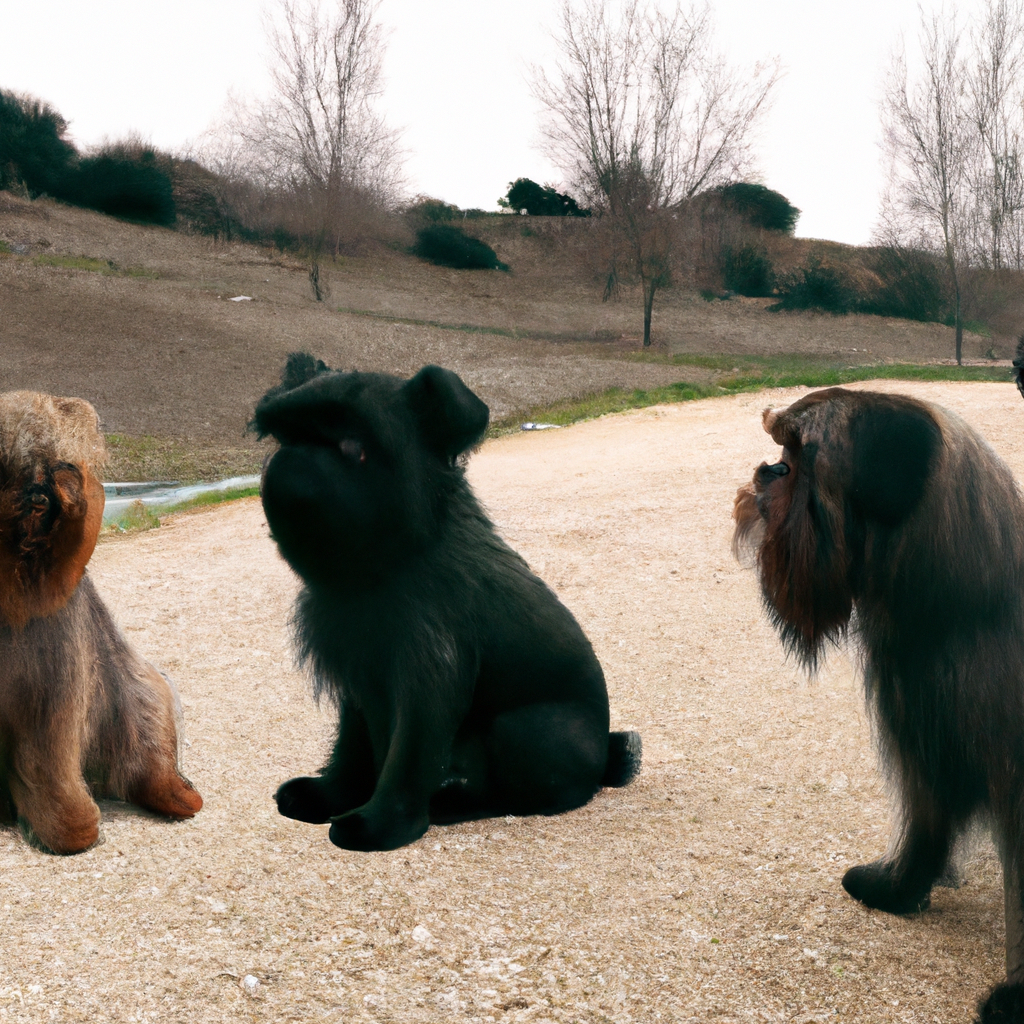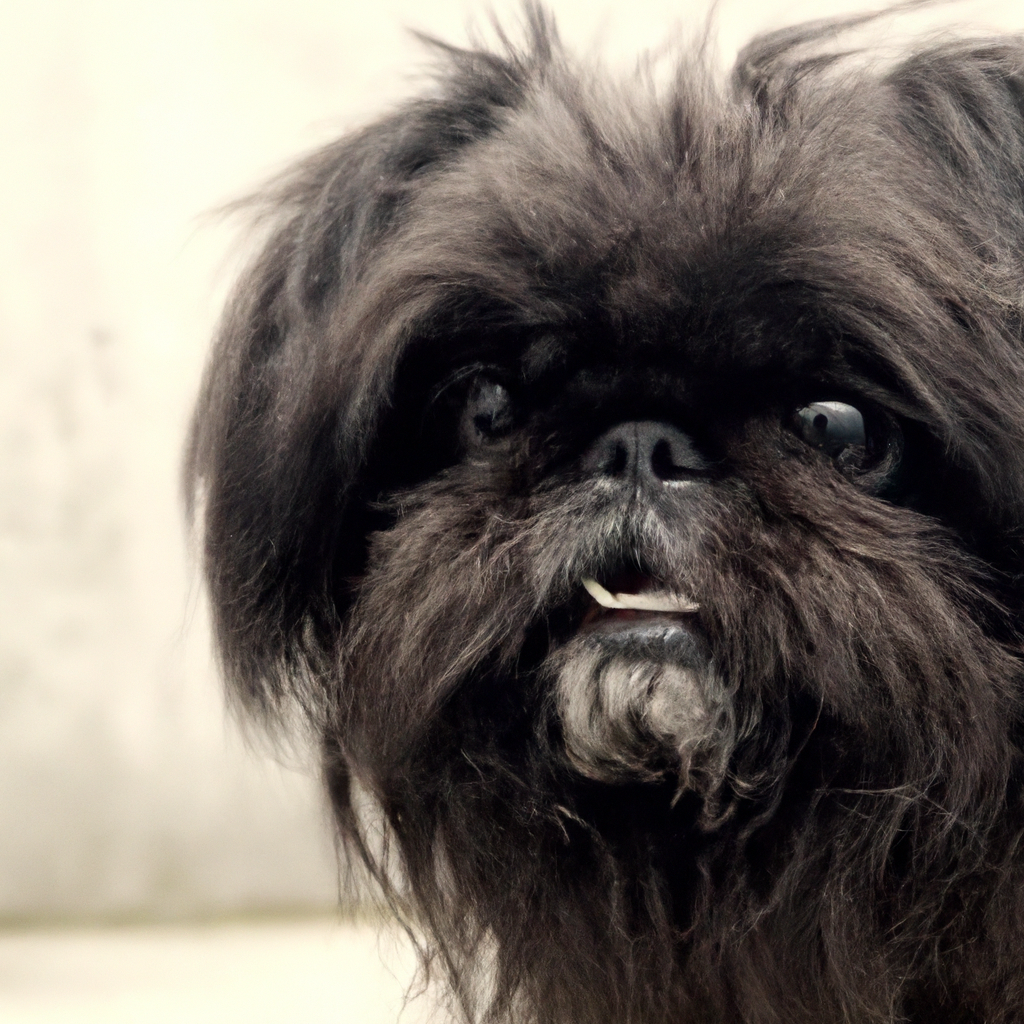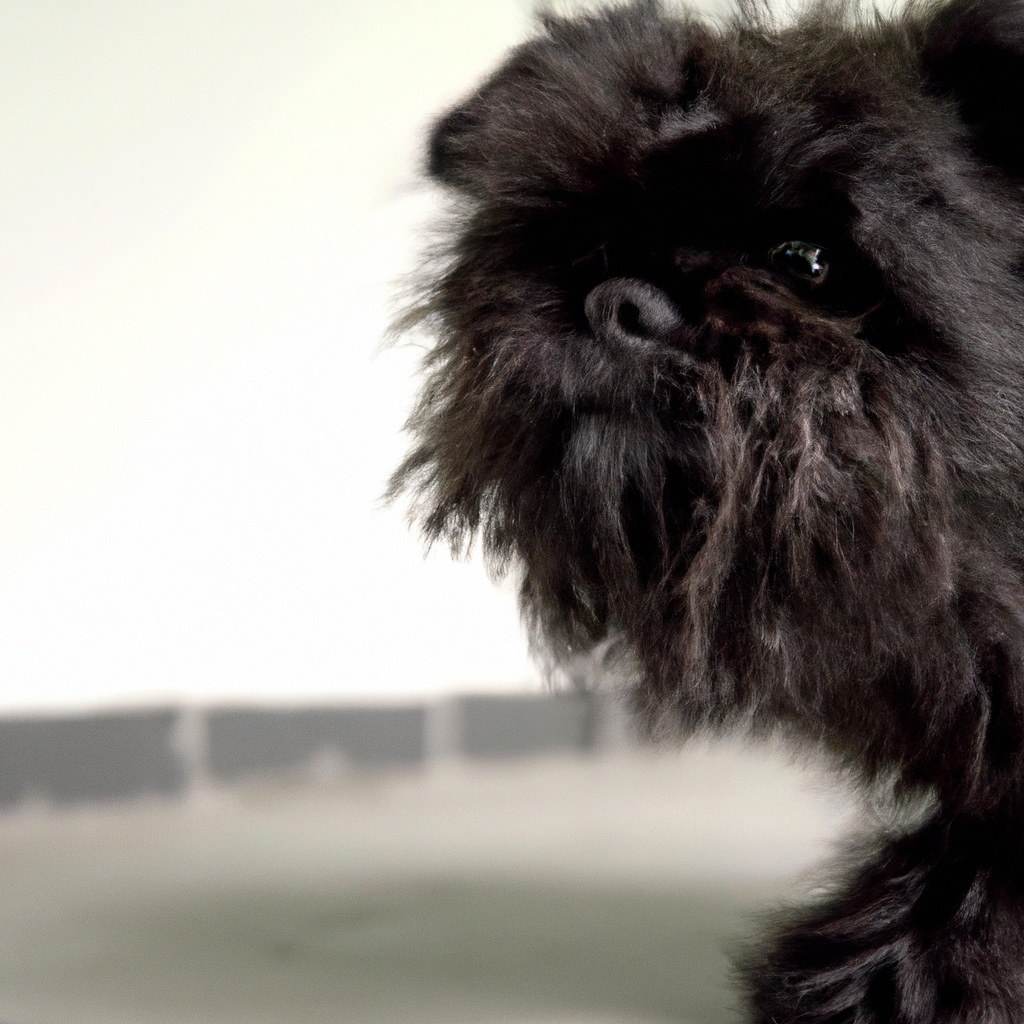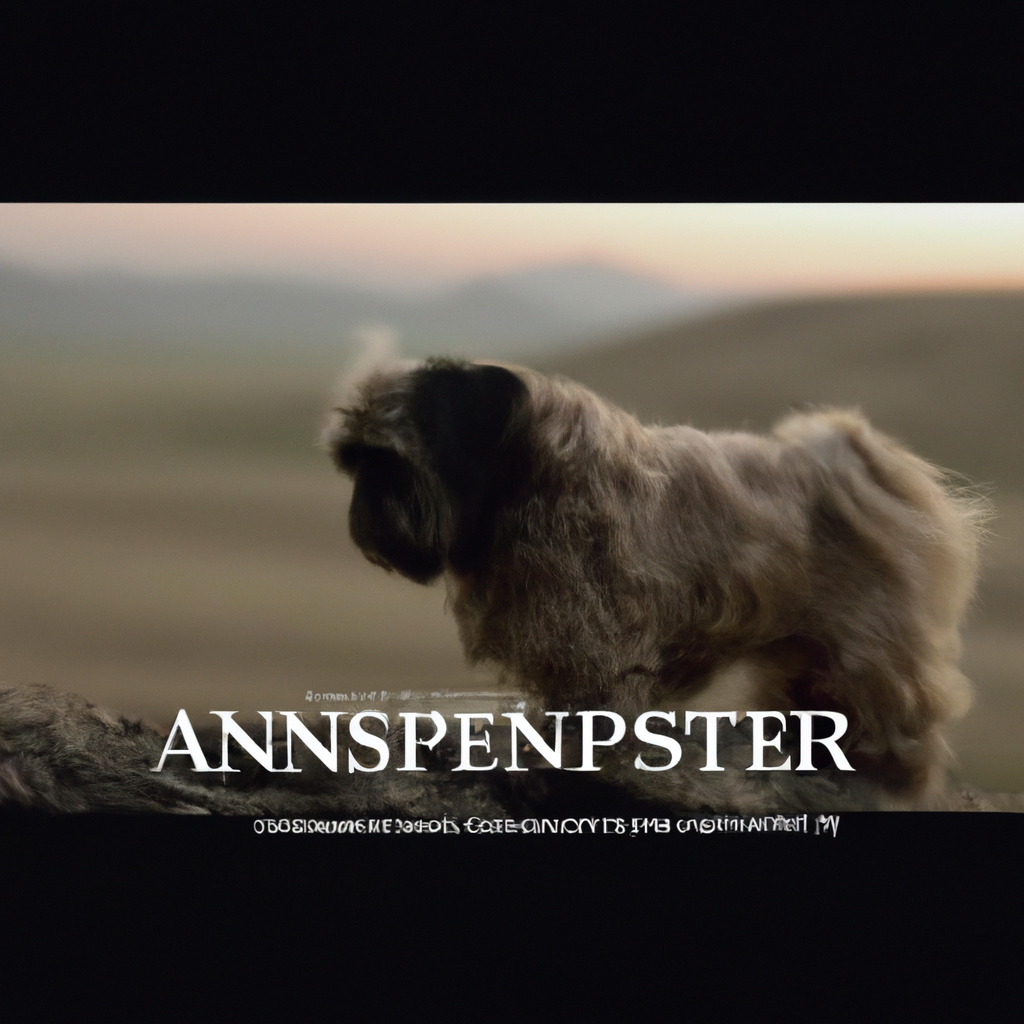Affenpinschers, also known as “Monkey Terriers” or “Monkey Dogs” due to their distinct facial features, are a small breed of dog that originated in Germany. The term ‘Affenpinscher’ translates to ‘monkey terrier’ in German, which is a fitting description for this breed’s monkey-like expression. The breed’s evolution dates back to the 17th century, where they were primarily used as ratters in homes, stables, and shops. Over time, Affenpinschers were bred to become smaller for the purpose of being a companion dog, rather than a working dog. Despite their small size, they are known for their fearless and protective nature. The Affenpinscher’s unique appearance and personality have made it a beloved breed worldwide.
Understanding the Evolution of Affenpinschers
The Affenpinscher, affectionately known as the “Monkey Dog” due to its primate-like appearance and playful nature, has a rich and fascinating history. The evolution and origin of this breed are as intriguing as the breed itself.
The Affenpinscher’s story begins in the 17th century in Germany. The breed’s name, Affenpinscher, translates to “monkey terrier” in German, a nod to its distinctive facial features. Initially, these dogs were larger than the Affenpinschers we know today, approximately 12 to 13 inches tall. They were primarily used as ratters, their job being to control the rodent population in homes, stables, and shops. Their agility, courage, and tenacity made them excellent at this task.
As time passed, the Affenpinscher began to evolve. Breeders started to favor smaller sizes, and by the late 18th to early 19th century, the Affenpinscher had shrunk to its current size of about 9 to 12 inches. This size reduction was likely due to a change in the breed’s primary function. From being a working dog, the Affenpinscher transitioned into a companion animal, particularly popular among the ladies of the house. Its smaller size made it more suitable for this role, as it could comfortably sit on a lady’s lap and be carried around easily.
The Affenpinscher’s evolution didn’t stop there. In the late 19th century, breeders began to focus on refining the breed’s appearance. They selectively bred Affenpinschers with other small breeds like the Pug, the German Pinscher, and the German Silky Pinscher. This resulted in the Affenpinscher’s distinctive wiry coat, bushy eyebrows, and beard, which give it its unique monkey-like appearance.
The Affenpinscher’s journey to other parts of the world began in the 20th century. The breed made its way to the United States in the 1930s, where it quickly gained popularity. The American Kennel Club recognized the Affenpinscher in 1936, further cementing its status in the dog world. However, World War II put a temporary halt to the breed’s growth, as breeding programs were put on hold. It wasn’t until the 1950s that the breed’s popularity began to rise again.
Today, the Affenpinscher is cherished for its unique appearance and charming personality. It’s a small dog with a big heart, known for its loyalty, intelligence, and playful nature. Despite its evolution from a working dog to a companion animal, the Affenpinscher has retained its courage and tenacity, traits that make it a wonderful watchdog and a delightful pet.
In conclusion, the Affenpinscher’s evolution is a testament to the breed’s adaptability and enduring appeal. From its origins as a ratter in Germany to its current status as a beloved companion animal, the Affenpinscher has navigated changes in size, function, and appearance with remarkable resilience. Its journey is a fascinating chapter in the larger story of dog evolution, offering insights into how breeds are shaped by human needs and preferences. As we continue to appreciate and care for our Affenpinschers, we are also honoring a rich history that spans centuries and continents.
The Historical Origins of Affenpinschers
The Affenpinscher, a breed of domestic dog, has a rich and fascinating history that dates back several centuries. Known for their distinctive, monkey-like faces, these small, sturdy dogs have captured the hearts of dog lovers worldwide. But where did they come from, and how did they evolve into the breed we know and love today?
The Affenpinscher’s story begins in Germany in the 17th century. The breed’s name, which translates to “monkey terrier” in German, is a nod to their unique, simian-like facial features. Initially, these dogs were larger than the Affenpinschers we see today, and they were primarily used as ratters on farms and in homes. Their small size, agility, and tenacity made them excellent at hunting and killing rats and other vermin.
As time went on, Affenpinschers began to evolve. Breeders started to favor smaller dogs, and over several generations, the breed’s size was reduced. This was likely due to a shift in their role in society. While they were still valued for their ratting abilities, Affenpinschers were increasingly kept as companion animals. Their small size made them ideal for city living, and their lively, affectionate nature made them popular pets.
In the late 19th and early 20th centuries, Affenpinschers began to gain recognition as a distinct breed. They were exhibited in dog shows in Germany and France, and breed standards were established to ensure consistency and quality. These standards described the ideal Affenpinscher as being small, with a rough coat, a monkey-like face, and a confident, fearless demeanor.
The breed’s popularity continued to grow, and by the 1930s, Affenpinschers had made their way to the United States. The American Kennel Club recognized the breed in 1936, further cementing its status. However, World War II put a temporary halt to the breed’s expansion. Many dog breeding programs were put on hold during the war, and the Affenpinscher population suffered as a result.
After the war, efforts were made to revive the breed. American breeders imported Affenpinschers from Germany to increase the gene pool, and slowly but surely, the breed began to recover. Today, while they are not as common as some other breeds, Affenpinschers are cherished by those who know them for their unique appearance and charming personalities.
The Affenpinscher’s journey from German ratter to beloved pet is a testament to the breed’s adaptability and enduring appeal. Despite their small size, these dogs are fearless, energetic, and full of character. They have evolved over centuries to become the Affenpinschers we know today: small in stature but big in personality.
In conclusion, the Affenpinscher’s evolution and origin are deeply rooted in history. From their early days as ratters in Germany to their current status as cherished companion animals, these “monkey terriers” have a rich and fascinating past. Their unique appearance, combined with their lively and affectionate nature, has ensured their place in the hearts of dog lovers around the world. Whether they’re hunting vermin or snuggling on the couch, Affenpinschers are a breed unlike any other.
Affenpinschers: A Journey from Ratters to Companions
Affenpinschers, often referred to as “Monkey Terriers” or “Monkey Dogs” due to their distinct primate-like appearance, have a rich and fascinating history. Their journey from being ratters to becoming beloved companions is a testament to their adaptability and charm.
The Affenpinscher’s story begins in 17th century Germany. The breed’s name, which translates to “monkey terrier” in German, is a nod to their unique, monkey-like faces. Initially, these dogs were larger than the Affenpinschers we know today, standing about 12 to 13 inches tall. They were primarily used as ratters, their small size and agile bodies making them excellent at hunting and killing rats and mice in homes, stables, and shops.
As time passed, Affenpinschers began to be bred smaller to serve as companions rather than working dogs. Their size wasn’t the only thing that changed; their distinctive rough, shaggy coats became a breed standard, adding to their monkey-like appearance. Despite these changes, Affenpinschers retained their fearless, confident nature, traits that made them excellent ratters in the past.
The breed’s journey took a significant turn in the late 19th century when they caught the eye of the French. The French fell in love with these little “diablotins moustachus” or “mustached little devils,” as they affectionately called them. The Affenpinscher’s popularity in France played a crucial role in their evolution. It was here that they were crossbred with the Griffon Bruxellois, leading to the development of the modern Affenpinscher we know today.
The early 20th century saw the Affenpinscher making its way across the Atlantic to the United States. The American Kennel Club recognized the breed in 1936, but World War II put a halt to the breeding of many dog breeds, including Affenpinschers. It wasn’t until the 1950s that the breed began to regain its popularity in America.
Today, Affenpinschers are cherished for their unique appearance and spirited personality. They are known for their loyalty, intelligence, and playful nature. Despite their small size, they are fearless and often unaware of their diminutive stature, ready to take on dogs much larger than themselves. Their former life as ratters is evident in their curiosity and tenacity.
However, it’s not just their bold and lively nature that makes them such beloved pets. Affenpinschers are also known for their affectionate and protective demeanor. They form strong bonds with their families and are known to be excellent companions. Their small size makes them perfect for apartment living, and their low-shedding coats are a bonus for those with allergies.
The Affenpinscher’s journey from ratters to companions is a fascinating tale of evolution and adaptation. These “mustached little devils” have come a long way from their origins in 17th century Germany. Today, they are cherished family pets, their unique appearance and spirited personalities winning hearts all over the world. The Affenpinscher’s story is a testament to the breed’s resilience, adaptability, and enduring charm.
The Role of Affenpinschers in 17th Century Europe
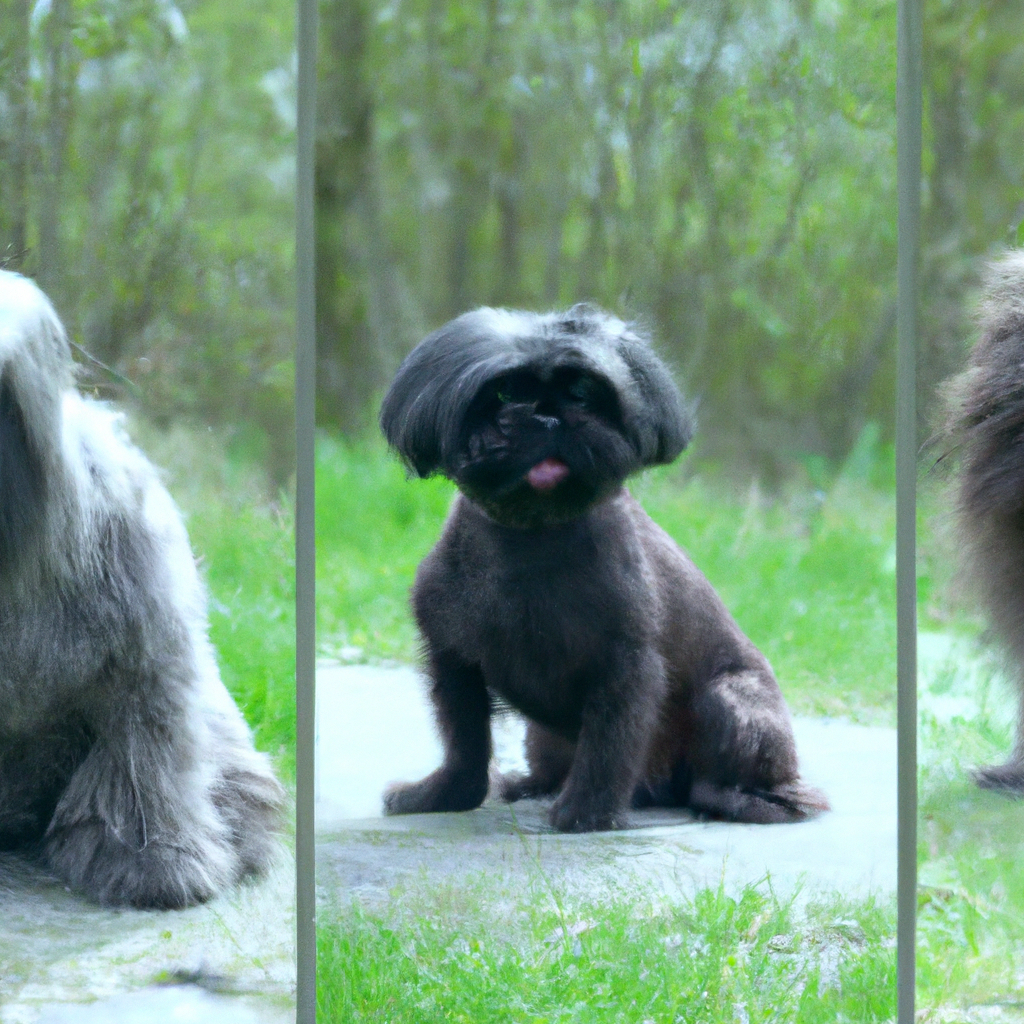
The Affenpinscher, a small but mighty breed, has a rich and fascinating history that dates back to the 17th century in Europe. Known for their distinctive, almost human-like facial expressions, these dogs have played a significant role in the lives of Europeans for centuries.
Originating in Germany, the Affenpinscher was initially bred to serve as a ratter, a dog that was tasked with hunting and killing rats, mice, and other small vermin. This was a crucial role in 17th century Europe, where infestations of these pests were common and could lead to disease and destruction of property. The Affenpinscher’s small size allowed it to navigate narrow spaces and its fearless nature made it an effective hunter.
However, the Affenpinscher was not just a working dog. Its unique appearance and lively personality also made it a popular companion animal. The name “Affenpinscher” translates to “monkey terrier” in German, a nod to the breed’s simian-like facial features and playful, mischievous nature. These dogs were known for their loyalty and affection towards their owners, making them a beloved part of many households.
As the breed evolved, so did its role in society. By the late 17th century, Affenpinschers were being bred not just for their ratting abilities, but also for their looks. Breeders began to select for smaller sizes and more distinctive facial features, transforming the Affenpinscher from a working dog into a fashionable pet for the European elite.
This shift in breeding practices was reflective of broader changes in European society. The 17th century was a time of great social and cultural transformation, with the rise of the middle class and the spread of Enlightenment ideas about individual rights and freedoms. Pets, including dogs like the Affenpinscher, became symbols of status and wealth, and owning a unique and exotic breed was a way for individuals to distinguish themselves and demonstrate their social standing.
Despite these changes, the Affenpinscher’s working dog roots were not forgotten. Even as they were being pampered by the upper classes, these dogs retained their hunting instincts and fearless nature. This combination of traits – the Affenpinscher’s distinctive looks, playful personality, and hunting abilities – made it a unique and valued breed.
The Affenpinscher’s journey from ratter to companion animal is a testament to the breed’s adaptability and charm. These dogs have managed to carve out a place for themselves in a rapidly changing world, proving that size is no barrier to success. Today, the Affenpinscher is still cherished for its unique blend of traits, and while it may no longer be called upon to hunt rats, its lively spirit and distinctive looks continue to win hearts around the world.
In conclusion, the Affenpinscher’s evolution and origin are deeply intertwined with the history of 17th century Europe. From working dog to fashionable pet, this breed has navigated societal changes and emerged as a beloved companion animal. The Affenpinscher’s story is a reminder of the enduring bond between humans and dogs, and the many ways in which our four-legged friends enrich our lives.
Genetic Traits: The Evolutionary Path of Affenpinschers
The Affenpinscher, affectionately known as the “Monkey Dog,” is a small but feisty breed that has captured the hearts of dog lovers worldwide. But have you ever wondered about the origin and evolution of this unique breed? The Affenpinscher’s journey is a fascinating tale of genetic traits and evolutionary paths that have shaped this breed into the lovable companion we know today.
The Affenpinscher’s story begins in 17th century Germany, where they were initially bred to be ratters in homes, stables, and shops. Their name, Affenpinscher, translates to “monkey terrier” in German, a nod to their primate-like faces and terrier-like tenacity. These early Affenpinschers were larger than the ones we see today, with their size being a crucial trait for their work in keeping vermin populations under control.
As time passed, the Affenpinscher’s role began to shift from working dog to companion animal. This change in role led to a change in desired traits. Smaller, more companionable dogs were favored, leading to a gradual decrease in the Affenpinscher’s size. This is an excellent example of selective breeding, where specific physical or behavioral traits are encouraged over generations to create a breed with those desired characteristics.
The Affenpinscher’s distinctive face is another result of selective breeding. Breeders favored dogs with the monkey-like faces we associate with the breed today, leading to the Affenpinscher’s unique appearance. This is a trait they share with other breeds like the Brussels Griffon and the Miniature Schnauzer, which are believed to have been part of the Affenpinscher’s breeding program at some point in history.
The Affenpinscher’s coat is another key genetic trait that has evolved over time. The breed’s rough, shaggy coat was initially a practical feature, offering protection from the elements and the bites of the rats they were bred to hunt. Over time, this coat has been maintained and even enhanced through selective breeding, resulting in the dense, wiry coat we see today.
The Affenpinscher’s temperament has also been shaped by its history. Their tenacity and fearlessness, traits that made them excellent ratters, are still evident today. However, their role as companion animals has also led to the development of a playful, affectionate side. This combination of traits makes the Affenpinscher a unique and charming pet.
The Affenpinscher’s journey from ratter to companion animal is a fascinating study in the power of selective breeding and the evolution of genetic traits. Each aspect of the Affenpinscher’s appearance and temperament has been shaped by centuries of breeding for specific traits. The result is a breed that is not only distinctive and attractive but also perfectly suited to its role as a companion animal.
In conclusion, the Affenpinscher’s evolution is a testament to the breed’s adaptability and the enduring appeal of its unique traits. From its origins in 17th century Germany to its status as a beloved pet today, the Affenpinscher’s journey is a captivating tale of genetic evolution and the power of selective breeding. Whether you’re an Affenpinscher owner or simply a dog lover, understanding the breed’s history and evolution can deepen your appreciation for these charming and distinctive dogs.
Affenpinschers: From German Farms to Modern Homes
Affenpinschers, affectionately known as “monkey dogs,” have a rich and fascinating history that dates back several centuries. Originating from Germany, these small but sturdy dogs were initially bred to serve as ratters on farms. Their name, in fact, is a combination of the German words “Affen,” meaning monkey, and “Pinscher,” meaning terrier. This name perfectly encapsulates their unique appearance and terrier-like tenacity.
In the 17th century, German farmers were plagued by rats and other vermin that threatened their food supplies and livelihoods. To combat this problem, they needed a small, agile, and fearless dog that could chase and kill these pests. The Affenpinscher, with its compact size, quick reflexes, and bold nature, was the perfect solution. These dogs were not only effective ratters but also made excellent watchdogs, alerting their owners to any intruders with their sharp barks.
As time went on, the Affenpinscher began to evolve from a farm dog to a companion animal. This transition was largely due to their endearing qualities. Despite their initial purpose as working dogs, Affenpinschers were also known for their playful, affectionate, and loyal nature. These traits, combined with their distinctive monkey-like faces, endeared them to people far beyond the German farms.
By the late 19th century, Affenpinschers had become popular pets among the European nobility. Their small size made them ideal lap dogs, and their lively personalities provided endless entertainment. Breeders began to selectively breed Affenpinschers to emphasize these desirable traits, leading to the breed we know today.
The Affenpinscher’s journey to modern homes was not without its challenges, though. The two World Wars had a devastating impact on the breed, with many dogs lost or abandoned during these turbulent times. After World War II, the Affenpinscher population was dangerously low, and the breed was at risk of extinction.
However, thanks to the efforts of dedicated breeders, the Affenpinscher was saved from the brink of extinction. These breeders worked tirelessly to rebuild the breed, importing dogs from different countries to increase genetic diversity. Their hard work paid off, and the Affenpinscher population slowly began to recover.
Today, Affenpinschers are cherished pets in homes around the world. They are recognized by major kennel clubs, including the American Kennel Club, which officially recognized the breed in 1936. Despite their small size, these dogs have a big personality. They are known for their curiosity, intelligence, and sense of humor, making them a joy to have around.
While they may no longer be needed to chase rats on German farms, Affenpinschers have found a new purpose as beloved companions. Their journey from working dogs to cherished pets is a testament to their adaptability and enduring charm. Whether they’re keeping your lap warm or making you laugh with their antics, Affenpinschers are sure to bring a touch of joy to your life.
In conclusion, the Affenpinscher’s evolution and origin is a captivating tale of survival and transformation. From their humble beginnings on German farms to their status as cherished pets, these “monkey dogs” have certainly left their paw prints on the hearts of many. Their story serves as a reminder of the enduring bond between humans and dogs, and the incredible journey that many breeds have taken to become the pets we know and love today.
The Impact of Breeding on the Affenpinscher’s Development
The Affenpinscher, affectionately known as the “Monkey Dog” due to its primate-like appearance and playful nature, has a rich and fascinating history. The breed’s evolution and origin are deeply intertwined with the impact of selective breeding on its development.
The Affenpinscher’s story begins in 17th century Germany, where they were initially bred to serve as ratters in homes and stables. Their small size, agility, and tenacious spirit made them excellent at hunting and killing rats and mice, a task of great importance in a time when rodent-borne diseases were a significant threat. However, as time passed, the Affenpinscher’s role began to shift.
In the 18th and 19th centuries, the Affenpinscher started to transition from a working dog to a companion animal. This change was largely due to the breed’s endearing qualities. Their small size, coupled with their unique, almost human-like facial expressions and playful, affectionate nature, made them popular pets among the European nobility. As a result, breeders began to selectively breed Affenpinschers to emphasize these desirable traits.
Selective breeding had a profound impact on the Affenpinscher’s development. Breeders focused on reducing the breed’s size to make them more suitable for life in the lap of luxury. They also sought to enhance the Affenpinscher’s distinctive facial features, resulting in the breed’s characteristic “monkey face.” However, these changes were not purely cosmetic. The Affenpinscher’s temperament also evolved as a result of selective breeding. Breeders aimed to preserve the breed’s natural tenacity and spirit while also promoting a friendly, sociable nature.
However, the process of selective breeding was not without its challenges. The Affenpinscher’s small gene pool made it difficult to achieve desired traits without risking the introduction of health problems. Breeders had to be careful to maintain genetic diversity within the breed to ensure its long-term health and survival.
The two World Wars had a significant impact on the Affenpinscher’s development. During these periods of conflict, breeding programs were largely abandoned, and many dog breeds, including the Affenpinscher, faced the threat of extinction. However, dedicated breeders worked tirelessly to revive the breed in the post-war years. They imported Affenpinschers from different countries to increase genetic diversity and worked to standardize the breed’s appearance and temperament.
Today, the Affenpinscher is a beloved companion animal known for its distinctive appearance and playful, affectionate nature. The breed’s evolution from a working dog to a companion animal is a testament to the impact of selective breeding on its development. However, it’s also a reminder of the challenges and responsibilities that come with the practice of selective breeding.
In conclusion, the Affenpinscher’s journey from the stables of 17th century Germany to the living rooms of 21st century homes is a fascinating tale of evolution and adaptation. The breed’s development has been shaped by the changing needs and desires of humans, from the practical need for rodent control to the desire for companionship. Through it all, the Affenpinscher has retained its unique charm and spirit, making it a beloved pet for dog lovers around the world.
The Affenpinscher: A Detailed Look at Its Evolutionary History
The Affenpinscher, a small but mighty breed, has a rich and fascinating history that dates back several centuries. This breed, known for its distinctive monkey-like face and fearless demeanor, has evolved significantly over time, adapting to various environments and roles.
The Affenpinscher’s story begins in 17th century Germany, where it was initially bred to serve as a ratter in homes and stables. Its small size and agile nature made it an excellent choice for hunting and killing rats and mice, a common problem in those times. The name “Affenpinscher” itself translates to “monkey terrier” in German, a nod to its primate-like facial features and terrier-like tenacity.
As time passed, the Affenpinscher’s role began to shift. By the 18th and 19th centuries, this breed was no longer just a working dog. It had found its way into the hearts and homes of many families, serving as a beloved companion. This transition from ratter to companion was likely due to the Affenpinscher’s endearing qualities. Despite its small size, this breed is known for its courage, loyalty, and playful nature, making it an excellent family pet.
However, the Affenpinscher we know and love today is quite different from its ancestors. Early Affenpinschers were larger, with a more rugged appearance suited to their working roles. Over time, breeders began to selectively breed smaller Affenpinschers, aiming for a more compact size that would be more suitable for life indoors. This led to the development of the modern Affenpinscher, a petite dog with a big personality.
The Affenpinscher’s physical characteristics have also evolved over time. Early Affenpinschers had a variety of coat colors, including red, black, gray, and fawn. However, breeders eventually favored the black coat, leading to the predominance of this color in today’s Affenpinschers. The breed’s distinctive wiry coat and bushy eyebrows and beard have remained consistent, contributing to its unique, monkey-like appearance.
The Affenpinscher’s journey to the United States is another significant chapter in its evolutionary history. The breed first arrived in the U.S. in the early 20th century, but it wasn’t until after World War II that it gained popularity. American soldiers stationed in Europe during the war brought back Affenpinschers, introducing the breed to a wider audience. Today, the Affenpinscher is a recognized breed by the American Kennel Club and is cherished by many dog lovers across the country.
The Affenpinscher’s evolution is a testament to its adaptability and charm. From its origins as a ratter in Germany to its status as a beloved companion, this breed has navigated through various roles and environments. Its physical characteristics have evolved to suit its changing roles, but its endearing qualities have remained consistent. The Affenpinscher’s courage, loyalty, and playful nature have endeared it to many, ensuring its place in our homes and hearts.
In conclusion, the Affenpinscher’s evolutionary history is as unique and fascinating as the breed itself. Its journey from a working dog to a cherished companion is a testament to its adaptability and charm. Despite changes in size and appearance, the Affenpinscher’s spirit remains unchanged, making it a beloved breed for many dog lovers.In conclusion, Affenpinschers, also known as “Monkey Terriers”, have a rich history that dates back to the 17th century in Germany. Their evolution has been influenced by selective breeding for specific traits, primarily their distinctive “monkey-like” facial features and small size. Originally bred to serve as ratters, they have evolved into companion dogs. Despite their small size, they retain their bold and protective nature. The exact breeds involved in their origin remain unclear, but they are believed to be ancestors of the Brussels Griffon and the Miniature Schnauzer.
